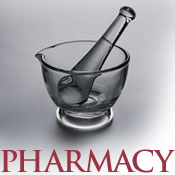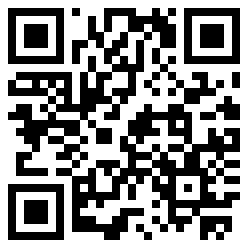Medilyzer is a smartphone application designed to provide mobile information and drug interaction checking for various over-the-counter (OTC) medications. The application is available for both the iPhone and Android smartphones, and according to the Medilyzer website a BlackBerry edition is on its way.
(more…)
Author: Jerry Fahrni
-
Definition confusion with Health 2.0 and Medicine 2.0
The Journal of Medical Internet Research has a very interesting article on the definitions of Heath 2.0 and Medicine 2.0 found in the scientific literature. Take a look at this table showing the various definitions for each. Wow, I wonder if a universally accepted definition will ever be developed and if so who’s going to be the one to develop it?
Definition of Health 2.0 and Medicine 2.0: A Systematic Review
Tom H Van De Belt1, MSc; Lucien JLPG Engelen1; Sivera AA Berben1, MSc; Lisette Schoonhoven2, PhDABSTRACT
Background: During the last decade, the Internet has become increasingly popular and is now an important part of our daily life. When new “Web 2.0†technologies are used in health care, the terms “Health 2.0″ or “Medicine 2.0†may be used.
Objective: The objective was to identify unique definitions of Health 2.0/Medicine 2.0 and recurrent topics within the definitions.
Methods: A systematic literature review of electronic databases (PubMed, Scopus, CINAHL) and gray literature on the Internet using the search engines Google, Bing, and Yahoo was performed to find unique definitions of Health 2.0/Medicine 2.0. We assessed all literature, extracted unique definitions, and selected recurrent topics by using the constant comparison method.
Results: We found a total of 1937 articles, 533 in scientific databases and 1404 in the gray literature. We selected 46 unique definitions for further analysis and identified 7 main topics.
Conclusions: Health 2.0/Medicine 2.0 are still developing areas. Many articles concerning this subject were found, primarily on the Internet. However, there is still no general consensus regarding the definition of Health 2.0/Medicine 2.0. We hope that this study will contribute to building the concept of Health 2.0/Medicine 2.0 and facilitate discussion and further research.
(J Med Internet Res 2010;12(2):e18)
doi:10.2196/jmir.1350 -
Top blog posts and searches from last week (24)
I always find it interesting to see what brings someone to my website and what they decided to read once they get here.
Most read posts over the past 7 days:
- Medscape Mobile for the BlackBerry – Still rolling along after several weeks at the top. The BlackBerry is a long way from being dead.
- Participation in the ASHP Summer Meeting from afar #ashpsm10 – I would like to see ASHP adopt some form of live webcast during their large annual meeting like the Summer Meeting and Midyear. I don’t see a downside.
- Scanning difficulties with certain barcodes
- Cool Technology for Pharmacy – Practice Fusion EMR – Great piece of software.
- A recent trifecta for bar-coding
- Best iPhone / iPod Touch Applications for Pharmacists – Just throw any Apple product in the mix and it’s bound to make the list.
- Quick update: Pharmacy iPad use – See #6 comment
- Cool Technology for Pharmacy – This was before I started putting the name of the cool technology in the blog title. This particular post was from Jun 18, 2009 and covered Alaris Smartpumps.
- Curriculum Vitae
- Musings on the “cloud”
Top searchterm phrases used over the past 7 days:
-
Tools of the trade
 I try to keep my weekend posts light, and today is no different. As I sit here waiting for the rest of the Fahrni crew to come to life I ran across a tweet from Garry Sykes that simply said “tool of the trade….very occasionally!” Following the link in the tweet takes you to a photo of a mortar and pestle.
I try to keep my weekend posts light, and today is no different. As I sit here waiting for the rest of the Fahrni crew to come to life I ran across a tweet from Garry Sykes that simply said “tool of the trade….very occasionally!” Following the link in the tweet takes you to a photo of a mortar and pestle.
(more…) -
“What’d I miss?” – Week of May 30, 2010
As usual there were a lot of things that happened during the week, and not all of it was pharmacy or technology related. Here’s a quick look at some of the stuff I found interesting.
(more…)
 Bar-code medication administration has been around for a while, but hasn’t gained the same notoriety as other forms of healthcare technology like computerized provider order entry (CPOE) and clinical decision support (CDS). However, it looks like the tide is starting to change as we’re currently in a unique position to see bar-coding from several different angles.
Bar-code medication administration has been around for a while, but hasn’t gained the same notoriety as other forms of healthcare technology like computerized provider order entry (CPOE) and clinical decision support (CDS). However, it looks like the tide is starting to change as we’re currently in a unique position to see bar-coding from several different angles. I’ve been following the Twitter stream from the ASHP Midyear in Tampa (
I’ve been following the Twitter stream from the ASHP Midyear in Tampa (